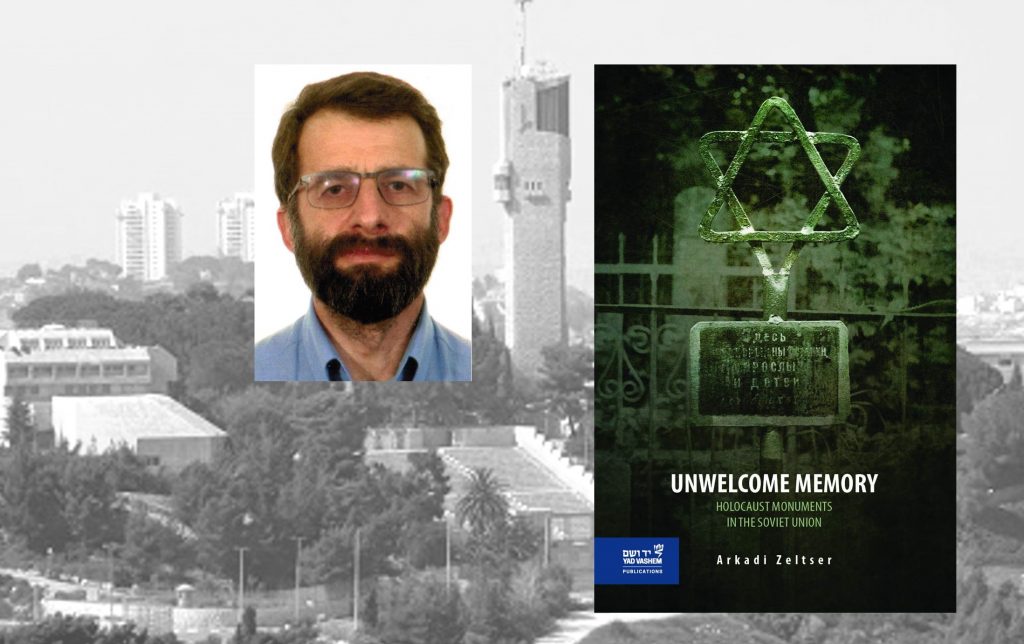Arkadi Zeltser: "In Israeli historiography, considerable attention has always been paid to the problems of Jewish life and suffering during the Holocaust"
Abstract:
A conversation with Dr. Arkadi Zeltser, who is an Israeli historian and specialist in the history of Soviet Jews during the interwar period and the director of the Moshe Mirilashvili Center for Research on the Holocaust in the Soviet Union at Yad Vashem. Among the topics raised are the historian's difficult path to the scholarly study of the Holocaust, which was conditioned by family trauma. We also discussed the development of the historiography of the Holocaust in Israel and throughout the world, and focused in detail on the results of Dr. Zeltser's academic research, such as transformative processes in the traditional Jewish community during Sovietization in the 1920s and 1930s; demographic trends of Jewry on the eve of the Second World War; and the features of the memorialization of Holocaust victims in the USSR (based on the historian's most recent book Unwelcome Memory: Holocaust Monuments in the Soviet Union). Dr. Zeltser emphasized that contrary to established beliefs, a certain space for commemorating Holocaust victims existed in the USSR. Among the most contentious points raised during the discussion was Jewish participation in the activities of the NKVD.
"In the emotional context, the Holocaust topic was taboo for me"
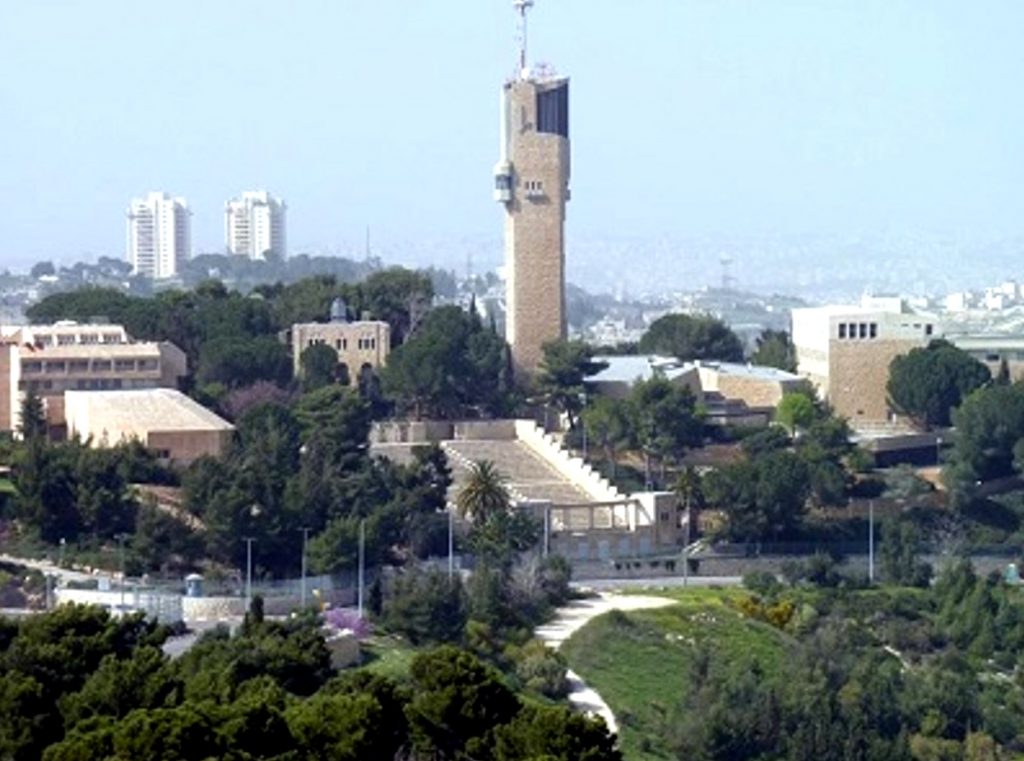
Dr. Zeltser, please explain what influenced your decision to become a professional historian since you initially trained as an engineer. How did this career change happen?
I liked history since my childhood. I always wanted to study it. But, having been born into a Jewish family, I understood that this path was closed to me. During the Soviet era the sphere of ideology was not accessible to Jews. When I turned 15, my mother said: "The road to decent universities is closed to you; they will not accept you into the ideological sphere. On top of it, of what use is this Marxism-Leninism to you?" Since her arguments were substantial, I agreed. I still did not completely understand all the complexities, but I already knew that my opportunities were limited. That was the atmosphere in the USSR in the late 1970s. At this very time, I enrolled in an institute. I graduated with a degree in Mechanical Engineering. After the institute I worked in my profession for some time. I had a pronounced Jewish identity, so in 1986, I began dealing with what may be called regional history. At the time, I was living in the city of Vitebsk [Belarus]. In my research, I was more interested not so much in the question of "why", (historians' tendency toward the establishment of cause-effect relationships) as in "how." During this period, I still had not grasped the characteristics of historical studies. I took up history professionally in the early 1990s when I was studying at the Hebrew University of Jerusalem. I asked Professor Мordechai Аltshuler to be my academic supervisor. He was the leading specialist in the history of Soviet Jewry. Dr. Altshuler accepted me immediately into the doctoral program. I had to pass exams in a large number of subjects because my higher education had no connection to history. This took quite some time, but I learned a lot. Without a doubt, in studying history on a professional level, I, as a Soviet person, carried a certain burden. However, there was no imprint on me of Soviet historical education of the Marxist-Leninist variety. My Marxism was limited exclusively to the subject of "Scientific Communism," which practically all students attending institutions of higher education in the USSR studied. For my research topic, I chose the Soviet period in the history of Jewry.
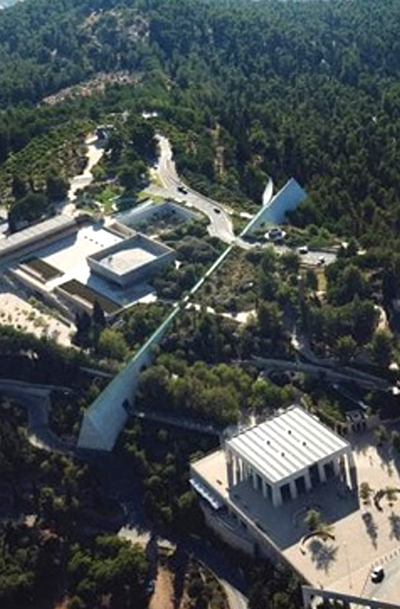
My integration into Holocaust Studies was significantly more complicated. I was a representative of the third generation of Holocaust victims. The entire family of my father, who was from western Belarus, died during the Holocaust. This topic was extraordinarily traumatic for him. Perhaps that is why we turned it into a family taboo. Our family knew perfectly what had happened, but we did not talk about it. In the emotional context, the Holocaust topic was taboo for me. When I became acquainted with my colleagues from Leningrad who were studying the Holocaust (a Leningrad-based group researching the Shoah, which included Alexander Frenkel, Daniel Romanovsky, Michael Rivkin, and others), we became friends and socialized closely. However, I was still trying to avoid the research topic connected with the history of the Holocaust. I had serious psychological resistance to this topic. So, when I began working at Yad Vashem, I had to overcome a certain psychological barrier, and that path turned out to be a difficult one.
Could you provide more details on the topics that you began researching on your way to the history of the Holocaust? What were the first studies that you produced as a historian?
I completed quite a few courses on the history of Russia and the USSR, including subjects connected with the history of Jewry in the nineteenth and twentieth centuries, Jewish population research, etc. I feel lucky to have studied in the 1990s. At the time, quite a few distinguished researchers were working at the Hebrew University of Jerusalem. It is one thing to read books or articles on historical topics. In them, we see the results of certain authors' research. But when we listen to these authors' lectures, we can grasp how they think and build their arguments. For me, this was a very good school of historical research. Among the most interesting lecturers were Mordechai Altshuler, Jonathan Frankel, Ezra Mendelson, Israel Bartal, and Shaul Stampfer. These academics had a stellar international reputation. However, at the start of my academic career, I decided not to choose the history of the Holocaust for my research topic. My dissertation was on the history of Soviet Jewry during the interwar period. The beginning of my Holocaust studies took place at a later point in my career, when I was overcoming my inner barriers while working at Yad Vashem.
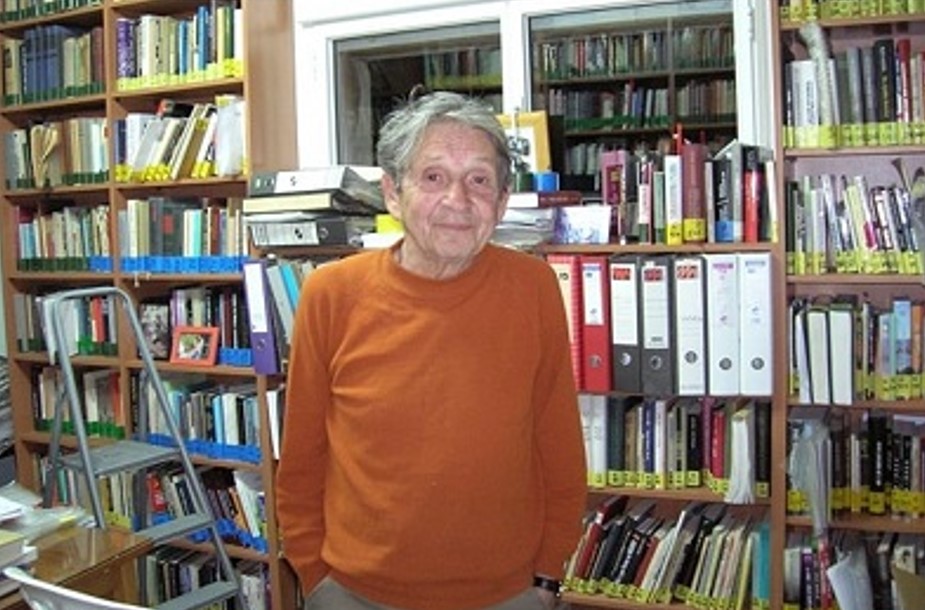
Which historical works were most important for you in the process of becoming a historian?
I read very many works devoted to the history of Jewry in the nineteenth and twentieth centuries. This was crucial to understanding the general historical context. Altshuler's works (especially his book on the demography of Jews in the USSR) had a huge impact on me. This book, Soviet Jewry on the Eve of the Holocaust, analyzes a large number of demographic and statistical data. The author draws a considerable number of important conclusions about the social and cultural trends in the life of Soviet Jews during the interwar period. I also very much liked Stampfer's books. He researches the traditional society. It was important for me to understand what the traditional society was because I was studying the history of Jewry during a transitional period (the transition from a traditional society to a modern one). Among general works on the history of the Holocaust, I would single out those by Saul Friedländer.
When I was writing my first research study, my goal was to overcome the stereotypes that were formed during the Cold War. These stereotypes existed both in Western societies and the USSR. In reading Elie Wiesel's book The Jews of Silence, I realized that the reality of life for Soviet Jews was significantly more complex than the ideas that had been formed in the Jewish diasporas in Western countries. This period was also characterized by views of Soviet Jews as second-class Jews. These views were formed among a segment of representatives of Israeli Zionist historiography. It was important for me to shatter the stereotypes reigning in Western countries and in Israel about Soviet society being atomized (as defined by Solomon Shvarts), in which no ethnic identity remained. Such a view gave rise to the idea that Soviet Jews were not Jews at all, which, in fact, was not the case.
"In today's world, it is very problematic to talk about some national school of historiography of the Holocaust"
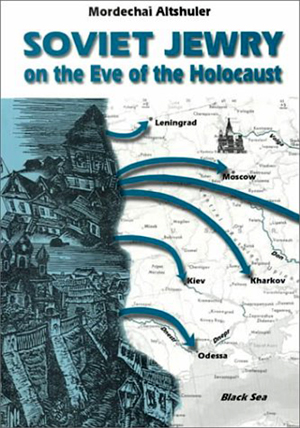 Which trends in the contemporary historiography of the Holocaust do you regard as most important?
Which trends in the contemporary historiography of the Holocaust do you regard as most important?
First of all, I would like to emphasize the departure from studying the history of the Holocaust as a certain apparatus, a mechanism that was unfolding within the decision-making system of German bureaucracy. This approach was formed in the 1970s and remained dominant until the 1990s. According to this approach, the Holocaust was examined in the context of bureaucratic decisions being made on the ground. Second, it is important to note that discussions between intentionalists and functionalists have died down. Today, researchers have begun to pay considerably more attention to societies and the social dynamics of how the Holocaust unfolded. Their attention is focused on such questions as the attitude of various population groups to the Holocaust, the attitude of Jews themselves, and others. One other trend is the powerful influence of postmodernist narrative, for example, the analysis of ego-documents (diaries and letters written both by Jews and German soldiers and the surrounding population). No less important is the birth of Gender Studies of the Holocaust. What is important here is not just the rise of research in the sphere of women's history but also of Gender Studies as such (the study of the features marking the redistribution of the functions and roles of men and women in extreme conditions). In acute, extreme conditions, women and children began to fulfill functions that, under normal circumstances, were absolutely not intrinsic to them (within the framework of ideas that predominated in society at the time). The study of the family is very important. Questions relating to identity and interethnic relations both in the occupied territories and the home front, as well as in the ranks of the Red Army, are also important aspects that are garnering a lot of attention. The inclusion of the Holocaust topic in the general historical context is another important direction of scholarly work. For example, we are accustomed to hearing that the ghettos in the occupied territories of the USSR were filled mostly with women and children. We never stop to consider the reasons behind this state of affairs. The straightforward answer is that the men were in the army. In fact, in the late 1930s, there was a serious gender imbalance in the Jewish population: There were significantly more women than men. This is an excellent example of how prewar history informs our understanding of the events of the Holocaust.
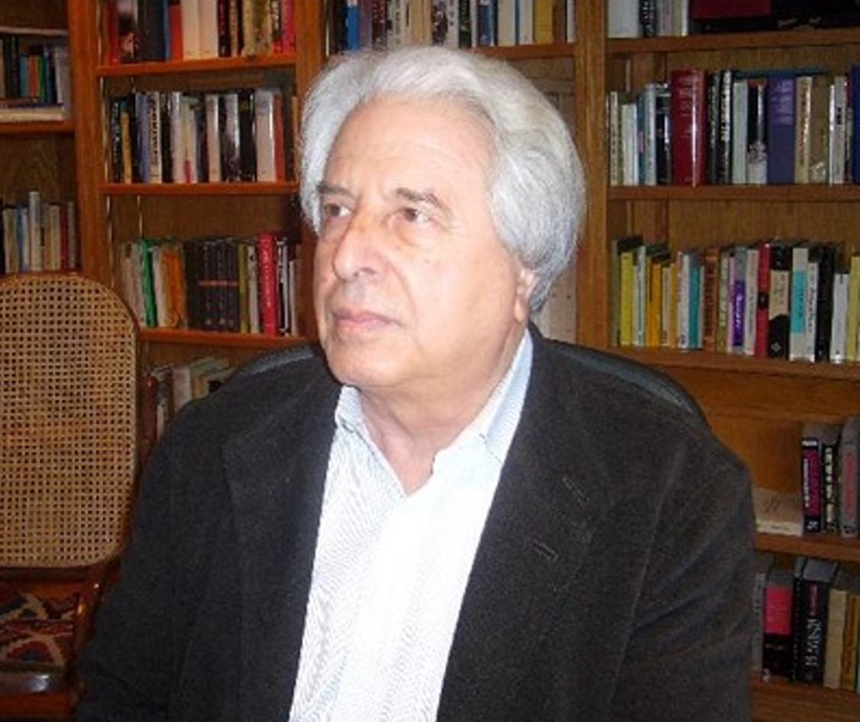
Could this have also been conditioned by the prevailing social stereotypes of the physical weakness and non-subjectness of women and children? Men are not usually considered victims because they "should be" manly and should fight, although in reality, men often became victims no less than women and children. Furthermore, women and children best suit this role in the context of the representation of the Holocaust. Such an approach helps create a more emotional effect (a higher level of empathy in the audience).
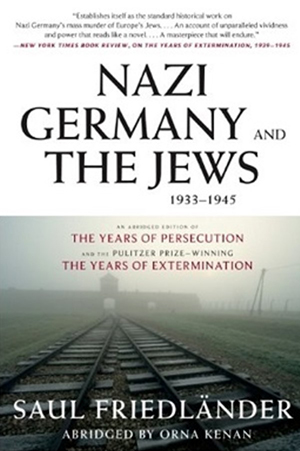 Yes, this also happened. The question of the representation of the Holocaust is one of the most important methodological problems. I only mentioned this as an example of how important the history of the interwar period is to understanding the Holocaust. Naturally, this is not the sole reason. Any social phenomenon has an array of causes. It is important to view the Holocaust not just in the context of the war but in the broader historical perspective. Back in the 1960s and 1970s, such approaches to the conceptualization of the Holocaust did not enjoy any special popularity—if they were even used at all. Today, there is a different trend: the reduction of attention to the Jewish topic, that is, to what happened to the Jews and how they reacted to those events. Considerably more attention is devoted to the historical context. You are absolutely correct in what you are saying. And this is probably most noticeable on the level of inscriptions on monuments. Most often, they refer to women, elderly people, and children. The authors of these inscriptions were probably seeking to emphasize that these were innocent victims. This is an archetypal approach to the treatment of the innocence of victims.
Yes, this also happened. The question of the representation of the Holocaust is one of the most important methodological problems. I only mentioned this as an example of how important the history of the interwar period is to understanding the Holocaust. Naturally, this is not the sole reason. Any social phenomenon has an array of causes. It is important to view the Holocaust not just in the context of the war but in the broader historical perspective. Back in the 1960s and 1970s, such approaches to the conceptualization of the Holocaust did not enjoy any special popularity—if they were even used at all. Today, there is a different trend: the reduction of attention to the Jewish topic, that is, to what happened to the Jews and how they reacted to those events. Considerably more attention is devoted to the historical context. You are absolutely correct in what you are saying. And this is probably most noticeable on the level of inscriptions on monuments. Most often, they refer to women, elderly people, and children. The authors of these inscriptions were probably seeking to emphasize that these were innocent victims. This is an archetypal approach to the treatment of the innocence of victims.
The second example illustrating the integration of the general historical context into the study of the Holocaust is the statistical indicators of the correlation between the Jewish population in the occupied territories and the population that lived in unoccupied territories. Only 30 percent of the USSR's Jewish population lived outside of territories occupied by Nazi Germany; that is, only 30 percent of the Jewish population in the USSR did not become victims of the Holocaust, apart from those Jews who had been drafted into the Red Army, taken prisoners and shot solely because of their Jewish background.
Other topics are no less important. Recently, a Hebrew-language book by Gyu Міron about time and space within the Holocaust was published. This is quite a postmodernist and somewhat unusual interpretation of the Holocaust. However, it is important for us to understand how people who were in a closed space were changing how they perceived and assessed those events. Another direction in postmodernist research is the study of emotions in the context of the history of the Holocaust and the Second World War. There are quite a few other contemporary topics and trends that are extraordinarily important for the study of the history of the Holocaust.
Please describe the features of the development of the historiography of the Holocaust in modern-day Israel.
This is an excellent but very difficult question. In the contemporary world, it is very problematic to speak about some kind of national school of historiography of the Holocaust. This pertains not only to the historiography of the Holocaust but also to the majority of historical research. If a person was born in England and later moved to Israel, and they taught history there their entire life, the question arises: To what degree is this person English and to what degree Israeli? We come across people whose geography of moves is even broader. This also pertains to former Soviet citizens who were born, say, in Moscow, studied at Oxford, and are working in Canada or the US. It is difficult to assign them to some kind of national school of historiography because they have absorbed the professional and emotional influences of various academic milieus.
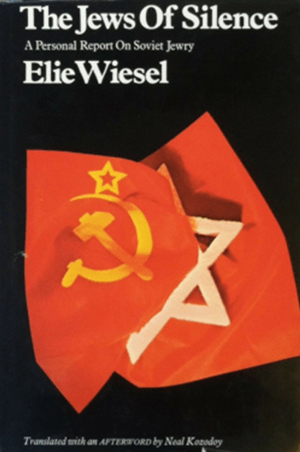 In singling out certain features of the development of historiography in modern-day Israel, I should note that a shift of accent has taken place. Back in the 1980s and 1990s, researchers were mainly focused on studying events in Poland, Germany, and Western Europe. Scholarly studies on the Holocaust in the USSR remained on the fringes. This was partly conditioned by the difficulty of obtaining access to sources. However, no less a role was played by factors connected with the Cold War. Of course, there were some researchers, for example, Yitzhak Arad and Shmuel Spector, who studied the Holocaust in the occupied territories of the USSR. However, there were only a few such works. In the last 25 years, this situation has changed drastically. Today, many more Israeli academics are studying various aspects of the history of the Holocaust on the territory of the USSR. For example, there are special projects at Yad Vashem that are devoted to Soviet topics, something that did not happen in the past.
In singling out certain features of the development of historiography in modern-day Israel, I should note that a shift of accent has taken place. Back in the 1980s and 1990s, researchers were mainly focused on studying events in Poland, Germany, and Western Europe. Scholarly studies on the Holocaust in the USSR remained on the fringes. This was partly conditioned by the difficulty of obtaining access to sources. However, no less a role was played by factors connected with the Cold War. Of course, there were some researchers, for example, Yitzhak Arad and Shmuel Spector, who studied the Holocaust in the occupied territories of the USSR. However, there were only a few such works. In the last 25 years, this situation has changed drastically. Today, many more Israeli academics are studying various aspects of the history of the Holocaust on the territory of the USSR. For example, there are special projects at Yad Vashem that are devoted to Soviet topics, something that did not happen in the past.
Israeli historiography is also marked by global trends in the scholarly study of the Holocaust. Contemporary topics and research directions are appearing. I am talking above all about research on the diaries of eyewitnesses and the rumors that circulated during the war. No less important is the study of time and space. It is worth noting that in Israeli historiography, it was customary to study the history of the Holocaust in different locations. In the context of Holocaust Studies in Eastern and Central Europe, dissertations were written about the functioning of the ghettos in Łódź, Warsaw, Lublin, Białystok, and elsewhere. This trend remains important. In Israeli historiography, substantial attention has always been paid to the problems of Jewish life and suffering during the Holocaust. In Israel, there is also a certain general trend toward the narrowing of studies of the Holocaust as a central event. Considerably more topics that once were on the fringes are appearing now. These topics are connected with the memory of the Holocaust, Gender Studies, and the fate of elderly people and children. The majority of similar directions is being integrated into Holocaust Studies from the sphere of general historical research.
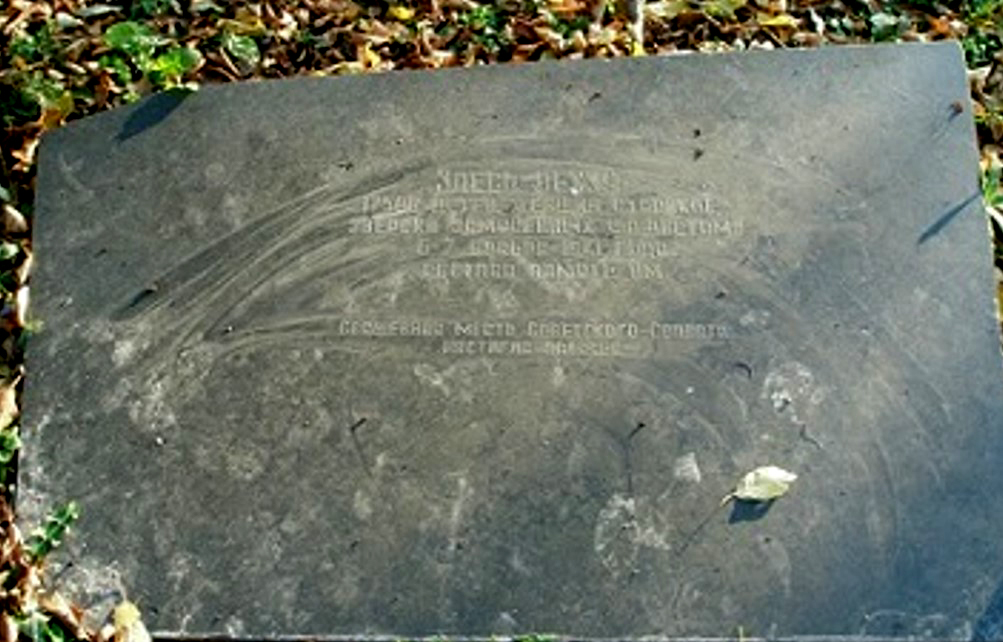
How would you assess the development of the historiography of the Holocaust in modern-day Ukraine? What directions do you consider to be the most promising for Ukrainian researchers?
I remember the situation in the 1990s very well. At the time, there were at least two important studies on the history of the Second World War and the Holocaust in Belarus (books by the German historians Christian Gerlach and Bernhard Chiari). However, there were practically no general works about the population of Ukraine, which was significantly larger in terms of territory and population. I am talking not just about similar studies done in Ukraine itself but in world historiography. Today, this situation has changed radically. In 2000–2010, several important works were published by Karel Berkhoff, Wendy Lower, Dieter Pohl, Kai Struve, Diana Dumitru, and others. In addition, a whole cohort of young researchers who study the Holocaust was formed in Ukraine. In the last few years, Yad Vashem has held three seminars for young researchers, which were conducted in partnership with the United States Holocaust Memorial Museum. Historians from Ukraine also participated in these seminars. Their research topics eloquently testify to the penetration in Ukraine of global historiographic trends in research on the Holocaust.
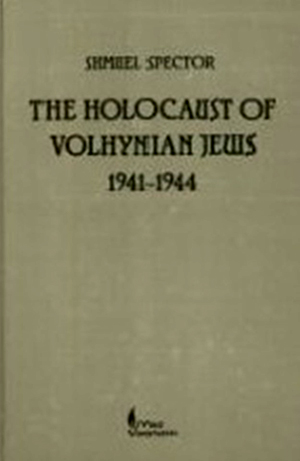
As for promising research topics, it is worth mentioning that there are some which are particularly painful, like the role of officials of local administrations and auxiliary police services in carrying out the Holocaust. Nevertheless, these topics are important for research. Of extraordinary importance is the gender dimension of research on the Holocaust, particularly the history of women in ghettos and the history of the OUN's role (both factions) during the Holocaust, although this is very difficult, especially in Ukraine. But it is important to recreate a full picture of events. Studying the role of various nationalities during the Holocaust is exceedingly complicated in the methodological context as well. Sources on this topic are often diametrically opposed to one another and are written from a very subjective perspective. In the memoirs of Jews and in texts written by OUN members in the emigration, problems pertaining to the Holocaust are illuminated from very different perspectives. Most of these sources were written during the postwar period. That is why it is extremely important to find other types of sources that were produced during the war. Another relevant research topic is the Holocaust in Transnistria, with a special emphasis on the borderland between Reichskommissariat Ukraine and Transnistria. No less relevant is the study of the behavior of the local population during the Holocaust—not just of the Righteous but another segment of the population previously defined by the general notion of "bystanders." Another very difficult but necessary research topic is the pogroms of 1941. John-Paul Himka and Kai Struve are focusing on this question.
"The Soviet government preferred not to speak about the killings of the Jews, but neither did it deny them"
Dr. Zeltser, you have done research on the history of Jews in the Soviet provinces during the interwar period. Can you provide more details about this research?
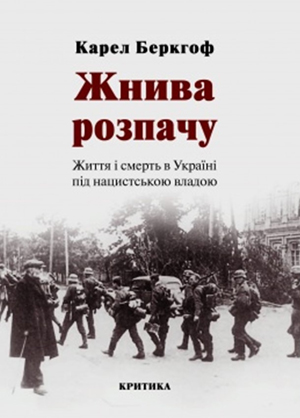 I wrote my dissertation on the Jews of northeastern Belarus (Vitebsk and neighboring towns). My idea was to create a typology of Jewish towns. The key question of this research was elucidating the process of the Sovietization and modernization in average towns in the former Pale of Settlement. I did a detailed study of economic processes in Jewish communities because, to a significant degree, they formed the daily life of Jews. For me, it was important to demonstrate the process of the transformation of Jewish society. The issue at hand was not the completed transformation into a full-fledged, modern society, inasmuch as the latter was being formed in such large cities as Moscow, Leningrad, Kyiv, Odesa, Dnipropetrovsk, Kharkiv, and elsewhere. I attempted to reinterpret an array of stereotypical perceptions of Soviet Jews that arose during the Cold War. No social changes take place quickly. Under the impact of Soviet atheist propaganda and the disappearance of traditional community institutions, Jewish identity shifted to the family. The latter is transformed into a central institute of intergenerational communication and the transmission of traditional values. I will cite an example to explain the complexity of the situation that arose in those years, even though it goes beyond the framework of my research subject. In 1939, many Minsk residents were Jews (over 70,000). Most of them were from small towns, and they brought a considerable number of traditional values to the city. Most of them continued to speak the Yiddish language within the family circle or spoke Russian with a noticeable accent (like those inhabitants who had moved from Belarusian villages and thus frequently spoke Russian with a strong Belarusian accent). Formed in the 1990s, the idea that, as of the 1930s, it was no longer possible to distinguish Jews from non-Jews, is a certain substitution of notions. The latter leads to the mixing of questions related to identity and ethnic equality. At the time, Jews truly felt a certain equality of opportunity. Here is another example. Imagine a typical communal apartment in Kyiv or Minsk. When people came home, they spoke various languages with one another (Ukrainian, Russian, Belarusian, Yiddish) and celebrated different religious holidays (Jewish or Orthodox). It was difficult to conceal these differences from one another. In Kyiv's Leninsky district (today: Pechersk), every second resident was a Jew. For that reason, these interethnic differences were a reality even in such large and modernized cities as Kyiv. In provincial centers, this situation was even more striking. The processes of internationalization, pushed by the Soviet government, play an important role in understanding the events of the Holocaust. In my research, I also focused on changes in the sphere of Jews' professional activities. During the interwar period, there was a transition from so-called "artisanal labor" to industrial. It is important to understand the psychological pivot that the participants of these events experienced. The key finding of my research is that, despite all the Soviet transformations and atheist propaganda, the Jewish population in provincial centers retained a considerable number of traits of the traditional lifestyle. The Jewish town as a sociocultural phenomenon disappeared, not during the period of Sovietization, but during the Holocaust. As Jeffrey Veidlinger demonstrated in his research on the Ukrainian shtetl, the transformative processes in traditional Jewish communities were substantially more long-lasting than is generally considered.
I wrote my dissertation on the Jews of northeastern Belarus (Vitebsk and neighboring towns). My idea was to create a typology of Jewish towns. The key question of this research was elucidating the process of the Sovietization and modernization in average towns in the former Pale of Settlement. I did a detailed study of economic processes in Jewish communities because, to a significant degree, they formed the daily life of Jews. For me, it was important to demonstrate the process of the transformation of Jewish society. The issue at hand was not the completed transformation into a full-fledged, modern society, inasmuch as the latter was being formed in such large cities as Moscow, Leningrad, Kyiv, Odesa, Dnipropetrovsk, Kharkiv, and elsewhere. I attempted to reinterpret an array of stereotypical perceptions of Soviet Jews that arose during the Cold War. No social changes take place quickly. Under the impact of Soviet atheist propaganda and the disappearance of traditional community institutions, Jewish identity shifted to the family. The latter is transformed into a central institute of intergenerational communication and the transmission of traditional values. I will cite an example to explain the complexity of the situation that arose in those years, even though it goes beyond the framework of my research subject. In 1939, many Minsk residents were Jews (over 70,000). Most of them were from small towns, and they brought a considerable number of traditional values to the city. Most of them continued to speak the Yiddish language within the family circle or spoke Russian with a noticeable accent (like those inhabitants who had moved from Belarusian villages and thus frequently spoke Russian with a strong Belarusian accent). Formed in the 1990s, the idea that, as of the 1930s, it was no longer possible to distinguish Jews from non-Jews, is a certain substitution of notions. The latter leads to the mixing of questions related to identity and ethnic equality. At the time, Jews truly felt a certain equality of opportunity. Here is another example. Imagine a typical communal apartment in Kyiv or Minsk. When people came home, they spoke various languages with one another (Ukrainian, Russian, Belarusian, Yiddish) and celebrated different religious holidays (Jewish or Orthodox). It was difficult to conceal these differences from one another. In Kyiv's Leninsky district (today: Pechersk), every second resident was a Jew. For that reason, these interethnic differences were a reality even in such large and modernized cities as Kyiv. In provincial centers, this situation was even more striking. The processes of internationalization, pushed by the Soviet government, play an important role in understanding the events of the Holocaust. In my research, I also focused on changes in the sphere of Jews' professional activities. During the interwar period, there was a transition from so-called "artisanal labor" to industrial. It is important to understand the psychological pivot that the participants of these events experienced. The key finding of my research is that, despite all the Soviet transformations and atheist propaganda, the Jewish population in provincial centers retained a considerable number of traits of the traditional lifestyle. The Jewish town as a sociocultural phenomenon disappeared, not during the period of Sovietization, but during the Holocaust. As Jeffrey Veidlinger demonstrated in his research on the Ukrainian shtetl, the transformative processes in traditional Jewish communities were substantially more long-lasting than is generally considered.
There are frequent discussions in Ukraine about the supposedly excessively high percentage of Jews in the Soviet state security organs. How do you explain the causes and the nature of this phenomenon?
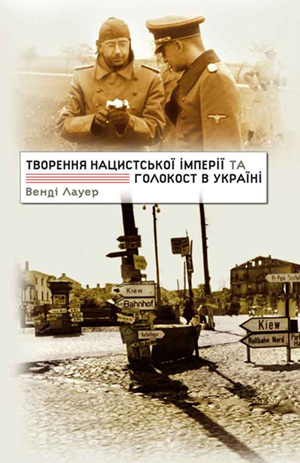 I have long been interested in this question. I published an article on Jews in the service of the NKVD. In 1999, Nikita Petrov and Konstiantin Skorkin published a reference book entitled Kto rukovodil NKVD (Who Was in Charge of the NKVD), which contains the biographies of the people who held top posts. This is a very important topic. The question of the NKVD's activity is, in fact, very well researched. There is a considerable amount of data on the activity of this state security agency.
I have long been interested in this question. I published an article on Jews in the service of the NKVD. In 1999, Nikita Petrov and Konstiantin Skorkin published a reference book entitled Kto rukovodil NKVD (Who Was in Charge of the NKVD), which contains the biographies of the people who held top posts. This is a very important topic. The question of the NKVD's activity is, in fact, very well researched. There is a considerable amount of data on the activity of this state security agency.
But can we say that the very question of the role of Jews in the NKVD is manipulative to a certain degree? Is it better, in this case, perhaps, to study the whole ethnic picture and the role of various ethnic groups in the NKVD, not just of Jews?
These kinds of studies are being done. If you look at the book Kto rukovodil NKVD, you will notice that Jews are just one of several ethnic groups. Research on this topic is important precisely in this interethnic context. Ethnic representation among the governing state security agencies perfectly illustrates how changes in Soviet policy were reflected in cadre rotations. There was a large Jewish presence in the NKVD organs until mid-1937. They significantly outnumbered the representatives of other ethnic groups on the level of the "brass" (the top echelon of the NKVD). From 1937 to the end of 1938, the number of Jews on this level decreased radically. In 1939–1941, the percentage of Jews among the top echelon of the NKVD, which influenced the approval of decisions, dropped sharply. In 1939 , Jews constituted no more than five percent of the NKVD brass. For the purpose of comparison, during the period from 1934 to 1937, up to 38 percent were of Jewish background. By 1939, most of them were replaced by East Slavic ethnic groups (Russians, Ukrainians, Belarusians, etc.). This is an excellent indicator of how the nationality policy changed throughout the USSR. Beginning in 1936, Russians were viewed as the first among equals. The notion of "elder brother" appears. The well-known Soviet-era hierarchy is constructed, in which the main spot is reserved for the three Slavic nationalities, headed by the Russians; they are followed by other titular nations and lower-level titular nations — autonomous peoples. Cadre rotations on the NKVD level perfectly reflect these changes in the nationality policy; after all, the state security system was under the direct leadership of Stalin. All key figures, even in oblast directorates, were appointed with Moscow's knowledge.
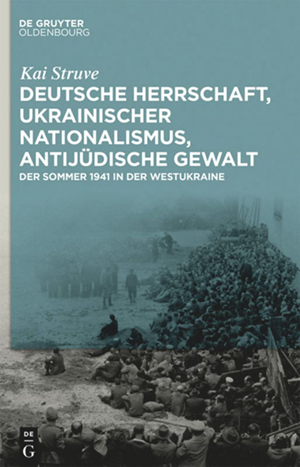 Another fascinating question is why, in the mid-1930s, the number of Jews on the highest level of the NKVD was disproportionately higher than the number of representatives of other ethnic groups. Jews were an ethnic group whose members lived mostly in cities and towns, and they had a comparatively good education as of the beginning of the revolutionary events in the Russian Empire. In 1917–1922, changes in the elites took place. New elites came to power. The leadership of the NKVD was part of this new elite. The new government sought to recruit to the state security organs those population groups that were considered loyal to the regime, not connected with service to the previous imperial government, and had a decent education. That is why there was an inordinately high percentage of representatives of the so-called "peoples of the west" (Poles, Lithuanians, Latvians, and Jews) among the personnel of the Soviet security organs in the early 1920s. Educated Russians had been integrated to a significant degree into the Russian Empire's system of rule. Whereas the Bolsheviks demonstrated readiness to make partial use of them in various positions in the Red Army, Russians were not trusted in such ideological organs as the Cheka-OGPU-NKVD.
Another fascinating question is why, in the mid-1930s, the number of Jews on the highest level of the NKVD was disproportionately higher than the number of representatives of other ethnic groups. Jews were an ethnic group whose members lived mostly in cities and towns, and they had a comparatively good education as of the beginning of the revolutionary events in the Russian Empire. In 1917–1922, changes in the elites took place. New elites came to power. The leadership of the NKVD was part of this new elite. The new government sought to recruit to the state security organs those population groups that were considered loyal to the regime, not connected with service to the previous imperial government, and had a decent education. That is why there was an inordinately high percentage of representatives of the so-called "peoples of the west" (Poles, Lithuanians, Latvians, and Jews) among the personnel of the Soviet security organs in the early 1920s. Educated Russians had been integrated to a significant degree into the Russian Empire's system of rule. Whereas the Bolsheviks demonstrated readiness to make partial use of them in various positions in the Red Army, Russians were not trusted in such ideological organs as the Cheka-OGPU-NKVD.
Second, if we analyze the Jewish composition of the NKVD brass, then the majority of its representatives was comprised of people who began to carve out a successful career for themselves during the Civil War, reaching the peak of their career positions in the 1930s. They were selected from among people who were the most educated and the most loyal to the Bolshevik regime. Jews were mostly an urban ethnic group demonstrating a clearly expressed trend toward obtaining a formal education. In the early stages of the development of the USSR, this ethnic group, which in the past had been held back by the Pale of Settlement and a Jewish quota, the entire potential of this ethnic group was realized. The policy of national equalization (affirmative action policy), which was implemented in the USSR, contributed to the social integration of groups that had been discriminated against in the past. This related not only to work in the NKVD but in other spheres as well. For example, in Ukraine and Belarus, every second physician was a Jew (47 percent of all doctors in Ukraine were Jews, and 51.3 percent—in Belarus). In this case, the issue was about the non-ideological sphere, where party membership did not play an important role. This accurately reflects the-then state of affairs in which Jews were overrepresented in various professional fields. At the initial stage, it was difficult for members of other ethnic groups, who were mostly of peasant stock, to compete with the urban stratum. The situation began to change only in the late 1930s. First of all, in 1937, Stalin got the idea to rejuvenate the party apparatus. As a result of repressions, most of the older generation was removed from many positions, especially key positions in the NKVD. The older generation was replaced by young representatives of the largest ethnic groups. Thus, the generational change was accompanied by significant changes in the ethnic context. Poles, Latvians, Lithuanians, Germans, and Greeks quickly lose their high state positions, even more so than Jews.
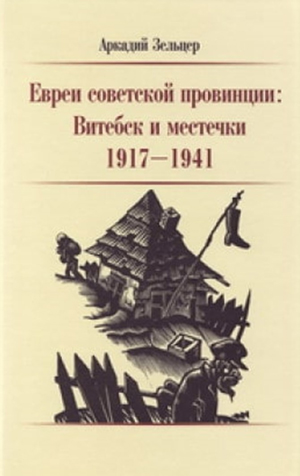 One of your recent studies, Unwelcome Memory: Holocaust Monuments in the Soviet Union, is about the memorialization of Holocaust victims in the USSR. In Ukraine, we often hear that the memory of the Holocaust was taboo in the USSR. Your research testifies that everything was much more complicated and not so unambiguous. Please tell us briefly about your book.
One of your recent studies, Unwelcome Memory: Holocaust Monuments in the Soviet Union, is about the memorialization of Holocaust victims in the USSR. In Ukraine, we often hear that the memory of the Holocaust was taboo in the USSR. Your research testifies that everything was much more complicated and not so unambiguous. Please tell us briefly about your book.
My fascination with this topic began back in the 1980s when my Leningrad colleagues were studying this question. They were pioneers, in collecting interviews about the Holocaust. These amateur historians were also accumulating material on memorialization. It was already understood then that the situation on the ground did not entirely correspond to generally accepted ideas. Erecting a monument to Holocaust victims in a place where they were shot was considered an impossibility in the USSR. Furthermore, there was a supposed ban on erecting monuments featuring ethnic Jewish symbols. These are the two generally accepted ideas that circulated among people in Leningrad, Moscow, and Kyiv. The formation of such ideas in Kyiv was influenced to a significant degree by the situation around the memorialization in Babyn Yar (the famous events of 1961 and 1966). This "Babyn Yar Syndrome" was extrapolated to encompass all Soviet Jews. It was also thought that the majority of monuments to Holocaust victims were installed in the western territories that had been annexed in 1939–1940 (where Jews had preserved their identity better because they had not experienced the same degree of Sovietization as elsewhere in the USSR). There existed dozens of photographs of monuments to Holocaust victims erected in the 1970s and 1980s in these western territories of the USSR. I have now managed to find information on more than 700 monuments that were erected in the USSR to victims of the Holocaust. Nearly a third of them contained some ethnic context (depiction of the Star of David, a menorah, inscriptions in Hebrew and Yiddish, a list of names inscribed on the monuments, etc.). Needless to say, the installation of such commemorative markers was no easy task. The Soviet government preferred not to talk about the killings of the Jews, but they never denied this. The Soviet authorities probably denied what we mean today by the word Holocaust, the Nazi policy aimed at the total physical murder of the Jews, the destruction of Jewish communities and their spiritual values. In the USSR, it was generally accepted that the Jews were killed because they were Soviet citizens. This notion began to be formed during the war years. It was already present in a note written by Molotov in January 1942. One example of the next stage in the formation of this approach to concealing Jewish victims of the Holocaust is the documents of the Extraordinary State Commission to investigate Babyn Yar (documents that were drawn up in 1943–1944). However, in the 1960s, a substantial number of publications appeared in the USSR, from which it was possible to conclude that the Nazis treated the Jews differently. In the post-Soviet space today, understanding how the situation of the Jews under Nazi occupation differed from that of other population groups is very important. Without a doubt, the Nazi regime was very brutal toward the entire population. However, it is appropriate to single out the Nazis' special treatment of the Jewish population. This is an important prerequisite for understanding the essence of the Holocaust.
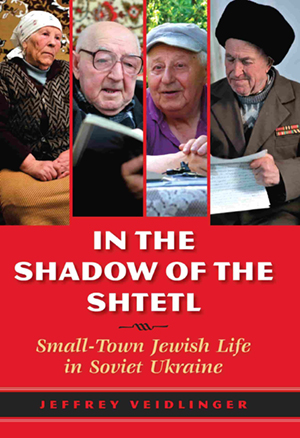 The reality of the memorialization of Holocaust victims in the USSR differed somewhat from propaganda. Certain forms of self-organization were undertaken by natives of those places where their relatives and loved ones had perished. In other words, it is appropriate to talk, not about the more than 700 monuments to Holocaust victims, but about the more than 700 communities that were self-organized for the sake of erecting these commemorative markers. These efforts were not always successful. There were cases where they did not receive the necessary permits. For example, it proved impossible to erect a monument to victims of the Holocaust in Berdychiv. A Soviet monument was installed in Babyn Yar without any mention of Jews. This was the government's alternative, one that contradicted the intentions of the Jewish community and some members of the Ukrainian intelligentsia with dissident leanings. These memorialization processes are key orientations that are covered in my book. It is helpful to note that quite a few of the inscriptions on these monuments are in Hebrew. They were written mostly in the spirit of the traditional Jewish culture of honoring the memory of the dead or fallen. In this context, no major differences were observed between the monuments that were erected on Soviet territory before 1939 or in the newly annexed western territories.
The reality of the memorialization of Holocaust victims in the USSR differed somewhat from propaganda. Certain forms of self-organization were undertaken by natives of those places where their relatives and loved ones had perished. In other words, it is appropriate to talk, not about the more than 700 monuments to Holocaust victims, but about the more than 700 communities that were self-organized for the sake of erecting these commemorative markers. These efforts were not always successful. There were cases where they did not receive the necessary permits. For example, it proved impossible to erect a monument to victims of the Holocaust in Berdychiv. A Soviet monument was installed in Babyn Yar without any mention of Jews. This was the government's alternative, one that contradicted the intentions of the Jewish community and some members of the Ukrainian intelligentsia with dissident leanings. These memorialization processes are key orientations that are covered in my book. It is helpful to note that quite a few of the inscriptions on these monuments are in Hebrew. They were written mostly in the spirit of the traditional Jewish culture of honoring the memory of the dead or fallen. In this context, no major differences were observed between the monuments that were erected on Soviet territory before 1939 or in the newly annexed western territories.
The success of memorialization often depended on the position of the authorities on the grassroots level. The representatives of local government bodies were often ready to meet Jewish communities' memorialization initiatives halfway. But this did not always happen. There were cases where conflicts erupted between Jews and local authorities. This perfectly demonstrates how the Soviet system functioned. It was not entirely negative. People who were loyal to the Soviet government had a chance to resort to informal types of self-organization. The presence of such informal processes of self-organization somewhat contradicts current established ideas about how the system worked.
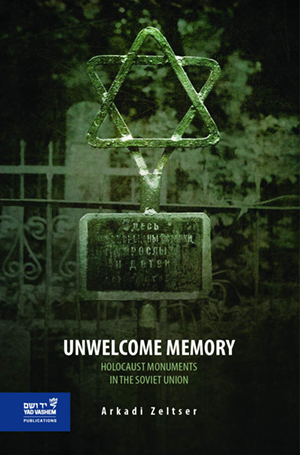 How can one identify historical periods in the memorialization of Holocaust victims in the USSR?
How can one identify historical periods in the memorialization of Holocaust victims in the USSR?
The first period, which was characterized by the greatest freedom, covers the years from 1945 to 1947. At this time, a certain mobilizing model that had existed during the war years continued to function. Discussion of ethnicity and religion was still permitted. The period of antisemitism (1948–1953) was the most controversial. There are statements that monuments to Holocaust victims were being erected even in those years. However, they are not accurate and based mostly on eyewitness testimonies. Owing to the fact that documentary evidence about this has not been preserved, it is extremely difficult to reach any conclusions. Mordechai Altshuler has a book about Judaism in the USSR in the postwar years. He writes, for example, that on Yom Kippur 1951, the synagogue in Kyiv was filled to overflowing. It is useful to remember that the year 1951 coincides with the period of the most flagrant antisemitism. However, there were spheres in which Jews demonstrated readiness to overcome their fears and express their ethnicity. Perhaps the memory of those who had perished during the Holocaust was the sphere in which feelings of guilt and duty spurred people into action, even during the period of state antisemitism. It is precisely for this reason that the late 1940s–early 1950s are a very complex period. On the one hand, everyone felt the danger posed by antisemitism; on the other, the processes of memorialization may well have continued
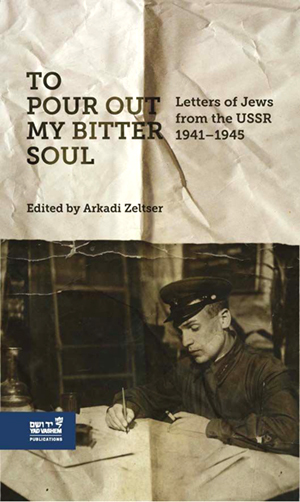 A "thaw" begins in the next period. The second half of the 1950s–late 1960s are quite a favorable period for the memorialization of Holocaust victims. This was a consequence of the general atmosphere of Khrushchev's Thaw and some uncertainty at the early stage of the Brezhnev era. During this period, the works of Yevgeny Yevtushenko and Anatoly Kuznetsov appear, and general studies that mention the Holocaust are published from time to time. Analogous processes were also taking place in the sphere of memorialization. The period of the Thaw saw the installation of arguably the largest number of monuments dedicated to Holocaust victims, which were also very interesting in terms of their form and content.
A "thaw" begins in the next period. The second half of the 1950s–late 1960s are quite a favorable period for the memorialization of Holocaust victims. This was a consequence of the general atmosphere of Khrushchev's Thaw and some uncertainty at the early stage of the Brezhnev era. During this period, the works of Yevgeny Yevtushenko and Anatoly Kuznetsov appear, and general studies that mention the Holocaust are published from time to time. Analogous processes were also taking place in the sphere of memorialization. The period of the Thaw saw the installation of arguably the largest number of monuments dedicated to Holocaust victims, which were also very interesting in terms of their form and content.
The next period covers the years of the Brezhnev Stagnation, the most complicated period for the memorialization of the Holocaust. However, there were opportunities for erecting monuments and various reminders of Holocaust victims. For example, during this period, Anatoly Rybakov's book Heavy Sand was published (1979), which depicts the Holocaust as it unfolded in the town of Snovsk (Chernihiv oblast). The book ends with a line from the Tanakh, the Hebrew Bible, which was engraved on a monument in Snovsk. This proves that even during the Brezhnev years, the theme of honoring the memory of Holocaust victims could penetrate literature. However, the 1970s and the first half of the 1980s were generally the least active period in terms of commemorating Holocaust victims. This situation may be explained in part by the fact that the older generation of Jews was dying out. The history of the Holocaust transitioned from the dimension of personal memory to family history. Some families practiced the transmission of memory to the next generation, bringing their children to visit monuments on certain memorial dates. Of course, though, in explaining the insignificant level of Jewish activity in the sphere of memorialization, it is useful to consider the harsher policy toward honoring the memory of Holocaust victims, which the Soviet regime implemented in the 1970s and 1980s.
"Among some positive trends, I would single out a certain "normalization" of the Holocaust topic within the social discourse "
Which trends in the culture of remembrance of Holocaust victims in Ukraine and other Eastern European countries would you single out?
This is a significantly more difficult question for me. I have a much better understanding of the trends related to the culture of memory of Holocaust victims during the Soviet period because I was researching them professionally. Of course, today, the situation is changing for the better. There is a generally accepted narrative of the history of the Holocaust. There are certain difficulties connected with the competition between memories. This is a very significant trend that stems from the events taking place in the post-Soviet space. There are quite a few painful moments, but this does not mean that they should be avoided. One in particular is the participation of the local population in the Holocaust, its reaction to these events, etc. Another trend is the inclination to equate Stalinism with Nazism. Whereas in the past these approaches were justified by the crucial need to vanquish the Stalinist legacy, today such things appear to be somewhat unfounded. Similar approaches affect historical studies and lead to the emergence of new stereotypes. Each of the totalitarian regimes should be examined in its own context. This will be a more historical approach to analysis and interpretation of the fundamental nature of these regimes. To this day, quite a few people are marked by the Soviet past. This is true even of those people who saw the USSR when they were still in kindergarten. Few people understand the concept of "homo sovieticus," but most of us are carriers of this array of myths and stereotypes that are intrinsic to Soviet culture. This trend should be overcome.
Among some positive trends, I would single out a certain "normalization" of the Holocaust topic within the public discourse. Whereas during the Soviet period, public discussions about this topic were not acceptable, today, the set of problems related to the history of the Jews and the Holocaust has become normative. My teacher, Mordechai Altshuler, often said: "There are no topics closed for discussion." It is only a question of methodological approaches and maintaining a balance during their analysis and discussion. An entire generation of young researchers working on the history of the Holocaust has been formed in Ukraine, and significant numbers of them are integrated into international scholarly discussions. This integration is one of the most important tasks for today's Ukraine, the realization of which will prevent the provincialization of historical scholarship. Although one can disagree with the viewpoints of one Western historian or another, they must definitely be read.
Interviewed by Petro Dolhanov.
The photographs accompanying this article are from open sources.
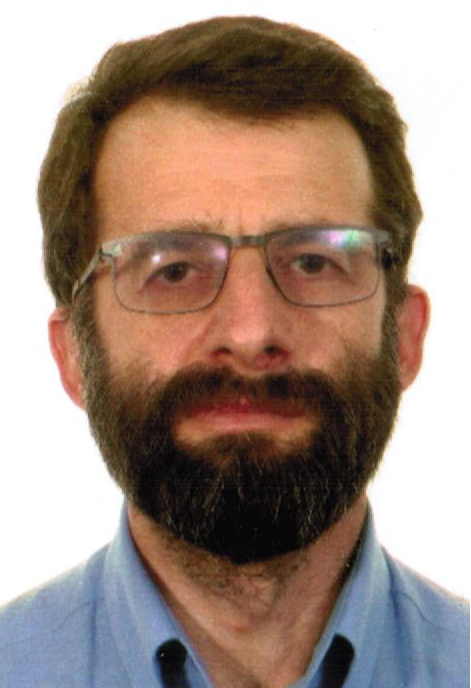 Arkadi Zeltser is the director of the Moshe Mirilashvili Center for Research on the Holocaust in the Soviet Union at Yad Vashem (Jerusalem). His research interests include the Holocaust in the USSR, Yiddish-language Soviet propaganda during the Second World War, Jewish memory of the Holocaust, relations between Jews and the non-Jewish population, and the activities of Jews in the NKVD. He is the author of the book Evrei sovetskoi provintsii: Vitebsk i mestechki 1917–1941 (The Jews of the Soviet Provinces: Vitebsk and the Shtetls 1917–1941, Moscow, 2006) and Unwelcome Memory: Holocaust Monuments in the Soviet Union» (published by Yad Vashem in English in 2018 and in Russian in 2023). He is also the editor of a collection of letters entitled To Pour out My Bitter Soul: Letters from the USSR 1941–1945 (published by Yad Vashem in English in 2016 and in Russian in 2019). He is a member of New York University's project "Jews in the Soviet Union: A History, Terror, Accommodation, and Integration 1930–1939."
Arkadi Zeltser is the director of the Moshe Mirilashvili Center for Research on the Holocaust in the Soviet Union at Yad Vashem (Jerusalem). His research interests include the Holocaust in the USSR, Yiddish-language Soviet propaganda during the Second World War, Jewish memory of the Holocaust, relations between Jews and the non-Jewish population, and the activities of Jews in the NKVD. He is the author of the book Evrei sovetskoi provintsii: Vitebsk i mestechki 1917–1941 (The Jews of the Soviet Provinces: Vitebsk and the Shtetls 1917–1941, Moscow, 2006) and Unwelcome Memory: Holocaust Monuments in the Soviet Union» (published by Yad Vashem in English in 2018 and in Russian in 2023). He is also the editor of a collection of letters entitled To Pour out My Bitter Soul: Letters from the USSR 1941–1945 (published by Yad Vashem in English in 2016 and in Russian in 2019). He is a member of New York University's project "Jews in the Soviet Union: A History, Terror, Accommodation, and Integration 1930–1939."
Originally appeared in Ukrainian @Ukraina Moderna.
This article was published as part of a project supported by the Canadian non-profit charitable organization Ukrainian Jewish Encounter.
Translated from the Ukrainian by Marta D. Olynyk.
Edited by Peter Bejger.
NOTE: UJE does not necessarily endorse opinions expressed in articles and other materials published on its website and social media pages. Such materials are posted to promote discussion related to Ukrainian-Jewish interactions and relations. The website and social media pages will be places of information that reflect varied viewpoints.







